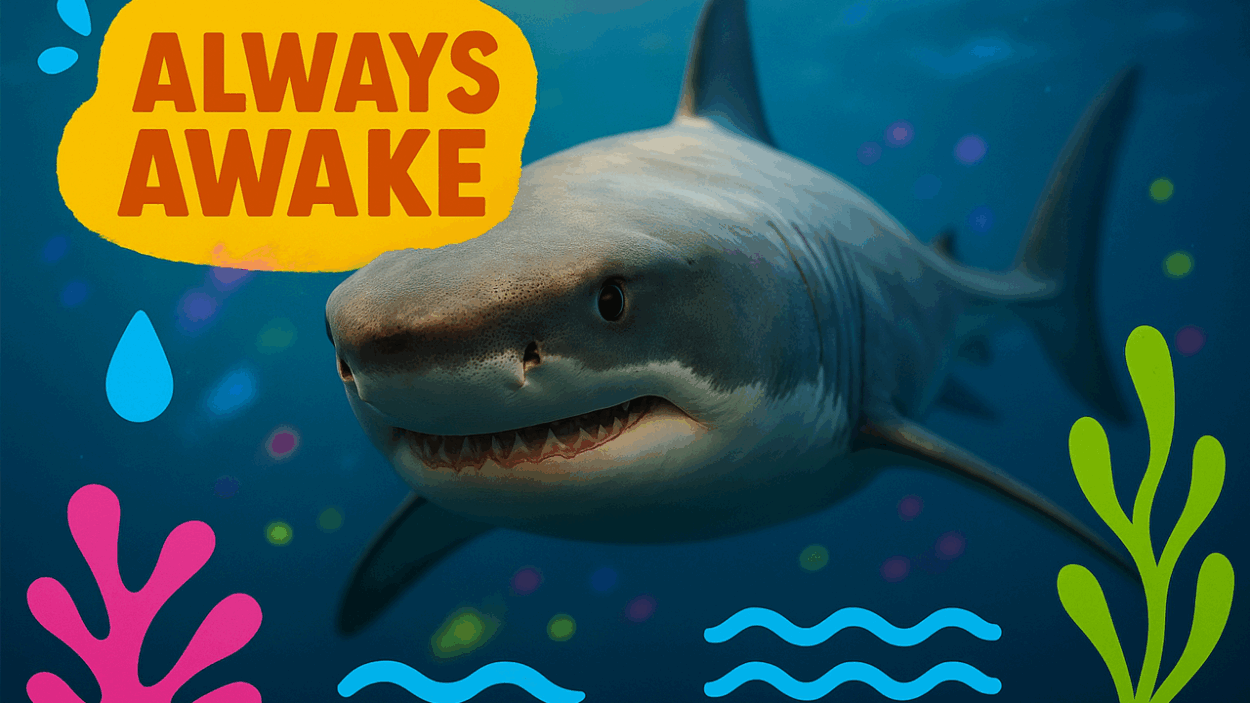This list features 11 remarkable animals that have evolved beyond the need for traditional sleep. From dolphins in temperate oceans to tilapia in freshwater lakes, these creatures represent one of nature’s most extraordinary adaptations – the ability to remain conscious and alert throughout their entire lives.
What makes these animals truly fascinating is their diverse evolutionary solutions to staying awake. Marine mammals like dolphins and orcas developed unihemispheric sleep, where only half their brain rests at a time. Birds like the alpine swift can fly for months without landing, catching power naps while soaring through the sky. Some fish must swim continuously to breathe, making sleep impossible.
The following table provides detailed information about each of these sleep-defying animals and their unique survival strategies.
Scientific Name
The official Latin name used by scientists worldwide to identify each species.
Habitat
The natural environment where each animal lives and thrives.
Sleep Pattern
The specific way each animal manages rest or stays alert without traditional sleep.
How Do Animals Survive Without Sleep?
Most animals that never sleep have developed special brain functions or physical needs that replace normal sleep. Dolphins and whales use unihemispheric slow-wave sleep, keeping one brain hemisphere awake while the other rests. This allows them to surface for air and watch for predators. Birds like swifts and frigatebirds sleep while flying, using brief microsleeps or resting half their brain during long glides.
Some animals, like great white sharks and yellowfin tuna, must swim continuously to breathe. Their bodies are built for constant motion, making traditional sleep impossible. Instead, they may enter rest states while still moving forward through the water.
What Evolutionary Advantages Do Sleepless Animals Have?
Never sleeping gives these animals major survival benefits. Marine mammals can avoid drowning and stay alert for predators in dangerous ocean environments. Flying birds can cover vast distances during migration without stopping to rest on land or water, where they would be vulnerable to attacks.
Fish that swim continuously can maintain their position in fast-moving currents and ensure steady oxygen flow over their gills. Cave-dwelling fish like the Mexican tetra save energy in food-scarce environments where the benefits of sleep don’t outweigh the risks of being inactive.
Are These Animals Always Active?
While these animals don’t sleep in the traditional sense, most still have periods of reduced activity or altered consciousness. Dolphins and other marine mammals rest half their brain while the other half stays alert. This allows for some recovery while maintaining essential functions.
Birds that sleep while flying enter very brief rest periods lasting only seconds. Even continuously swimming fish may have slower, more relaxed periods that serve similar functions to sleep. The key difference is that these animals never become fully unconscious or stop their essential life-sustaining activities.
Video
Animals That Never Sleep
| Animal | Scientific Name | Habitat | Sleep Pattern |
|---|---|---|---|
| Dolphin | Tursiops truncatus | Temperate and tropical oceans worldwide | Unihemispheric slow-wave sleep |
| Orca | Orcinus orca | All oceans, from arctic to tropical | Unihemispheric sleep; continuous activity in calves |
| Dall’s Porpoise | Phocoenoides dalli | North Pacific Ocean | Unihemispheric slow-wave sleep |
| Alpine Swift | Tachymarptis melba | Mountains and skies across Europe, Asia, and Africa | Unihemispheric sleep during flight |
| Great Frigatebird | Fregata minor | Tropical and subtropical oceans | Short-burst unihemispheric sleep during flight |
| Common Swift | Apus apus | Skies across Europe, Asia, and Africa | Unihemispheric sleep during flight |
| Sooty Tern | Onychoprion fuscatus | Tropical and subtropical oceans | Microsleeps during flight |
| Great White Shark | Carcharodon carcharias | Coastal surface waters of all major oceans | Continuous swimming (obligate ram ventilator) |
| Yellowfin Tuna | Thunnus albacares | Tropical and subtropical oceans worldwide | Continuous swimming (obligate ram ventilator) |
| Mexican Tetra | Astyanax mexicanus | Caves and surface waters in North America | Genetically suppressed sleep |
| Tilapia | Tilapia (Genus) | Freshwater streams, ponds, and lakes | Rest without sleep rebound |
Descriptions
Dolphin
To avoid drowning, dolphins rest only one half of their brain at a time. This allows the other half to remain alert, controlling breathing and watching for predators, meaning they are never fully unconscious.
Orca
Newborn orcas and their mothers stay constantly active and appear not to sleep at all for the first month of life. Adult orcas rest one brain hemisphere at a time while swimming.
Dall’s Porpoise
Like other cetaceans, this incredibly fast-swimming porpoise sleeps with only half its brain at a time. This allows it to surface for air and remain in a near-constant state of motion throughout its life.
Alpine Swift
These incredible birds can fly for over six months without landing. They are believed to catch “power naps” by sleeping with one side of their brain while gliding high in the atmosphere.
Great Frigatebird
Frigatebirds spend weeks soaring over the ocean. They sleep in flight for mere seconds at a time, totaling less than 45 minutes a day, an extreme adaptation for a life on the wing.
Common Swift
Spending up to 10 months a year in the air without landing, the common swift eats, mates, and sleeps on the wing. It enters brief periods of unihemispheric sleep while gliding at high altitudes.
Sooty Tern
Known as the “wideawake” tern, this bird can stay aloft for years. It engages in unihemispheric sleep and microsleeps lasting only a few seconds while gliding, accumulating minimal total rest.
Great White Shark
Because they must constantly swim forward to pass oxygen-rich water over their gills, great whites cannot stop to sleep. They likely enter periods of rest while continuing to glide through the water.
Yellowfin Tuna
Similar to some sharks, yellowfin tuna must swim continuously to breathe and maintain buoyancy. This means they cannot engage in sleep as we know it, remaining active their entire lives.
Mexican Tetra
The blind cave-dwelling populations of this fish have evolved to thrive in constant darkness with almost no sleep. This adaptation helps them conserve energy in a nutrient-poor environment where sleep offers no advantage.
Tilapia
While tilapia have periods of inactivity, they don’t seem to experience true sleep. If deprived of this rest, they don’t need to “catch up” later, suggesting it’s not a required biological function.


